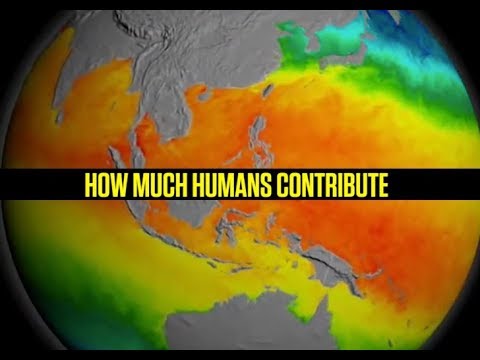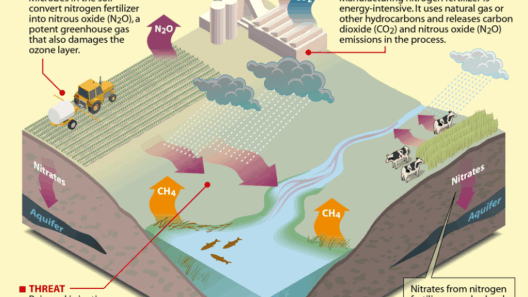The pressing issue of climate change necessitates an examination of various energy sources and their respective impacts on global warming. Among these, alternative energy has emerged as a beacon of hope, offering a potential reduction in greenhouse gas emissions. In this discourse, the relationship between the utilization of alternative energy and the modulation of global warming is dissected. The analysis will encompass various types of alternative energy, their operational mechanisms, contributions to reducing carbon footprints, and the broader implications for the environment.
To begin with, it is essential to elucidate what constitutes alternative energy. Typically, this term encompasses renewable energy sources such as solar, wind, hydroelectric, geothermal, and biomass. Unlike fossil fuels, which release significant amounts of carbon dioxide (CO2) when combusted, these alternatives harness natural processes to generate energy, often resulting in minimal or zero emissions. Transitioning to alternative sources is crucial for mitigating climate change and fostering sustainable development.
Solar energy, harvested through photovoltaic cells and solar thermal systems, represents a pivotal facet of alternative energy. When the sun’s rays are captured, they can be transformed directly into electricity or used to heat substances. The utilization of solar energy has been associated with a marked decrease in CO2 emissions. The Life Cycle Assessment (LCA) of solar technologies indicates that, over their operational lifespan, solar panels produce significantly lower emissions compared to traditional power generation methods. Moreover, advancements in solar technology are continuously improving efficiency, making this option increasingly viable for widespread adoption.
Wind energy, another significant player in the alternative energy sector, generates electricity through the kinetic energy of wind. Wind turbines convert this energy into electrical power without emitting greenhouse gases during operation. The salient feature of wind energy lies not only in its ability to produce electricity sustainably but also in its economic benefits. As technology evolves, the costs of wind energy installation have decreased, making it a compelling alternative to fossil fuels and drawing substantial investment. Consequently, the expansion of wind energy infrastructure can contribute measurably to the reduction of global warming.
Hydroelectric power, derived from flowing water, is one of the oldest forms of renewable energy. Dams harness the energy of water flow to produce electricity. While hydroelectric energy production is relatively clean in terms of CO2 emissions, it is imperative to consider the ecological ramifications. The construction of large dams can cause significant disruption to local ecosystems, including fish populations and water quality. Sustainable hydroelectric projects that minimize environmental impact are crucial for ensuring a net positive effect on global warming reduction.
Geothermal energy exploits the Earth’s internal heat. By harnessing steam or hot water from geothermal reservoirs, electricity can be generated with minimal emissions. This form of energy is particularly intriguing due to its reliability and consistent energy output compared to intermittent sources like solar and wind. Furthermore, geothermal plants generally have a smaller land footprint and lower CO2 emissions, highlighting their potential in the energy mix aimed at combating climate change.
Biomass energy, derived from organic materials, represents yet another alternative energy source. While biomass can theoretically be considered carbon-neutral—since the CO2 emitted during combustion is offset by the CO2 absorbed during the growth of the biomass—its production must be carefully managed. Unsustainable harvesting of biomass can lead to deforestation, habitat loss, and increased emissions, counteracting its intended benefits. Sustainable practices, such as using agricultural waste or dedicated energy crops, can mitigate these adverse effects.
Despite the undeniable advantages of alternative energy in curbing emissions, several challenges must be addressed to maximize its efficacy against global warming. Transitioning from fossil fuels to renewables requires substantial investment in infrastructure, technology, and research. Moreover, the intermittent nature of solar and wind energy necessitates the development of efficient energy storage solutions to ensure a stable energy supply. Innovative storage technologies, such as batteries and pumped hydro storage, are critical to overcoming these obstacles.
Additionally, the energy transition must also include considerations of social equity and accessibility. Disadvantaged communities often bear the brunt of pollution from fossil fuel production, and a fair transition to alternative energy must ensure these groups are not left behind. Investment in clean energy jobs, training programs, and affordable renewable energy access will be essential to foster inclusivity in the burgeoning green economy.
In conclusion, the adoption of alternative energy sources offers a significant opportunity to decrease global warming. By minimizing greenhouse gas emissions and promoting sustainability, these energy paradigms can facilitate a healthier planet for future generations. However, accompanying the technological advances in renewable energy must be robust policy frameworks, responsible practices, and a commitment to social equity. Only through a cohesive approach can alternative energy genuinely contribute to mitigating the impacts of climate change and fostering a sustainable future.
As society grapples with the existential threat posed by climate change, the momentum toward alternative energy sources must be accelerated. It is imperative that stakeholders across the globe collaborate to embrace these alternatives, recognizing their potential not merely as a temporary solution but as a foundational change in the global energy paradigm.





